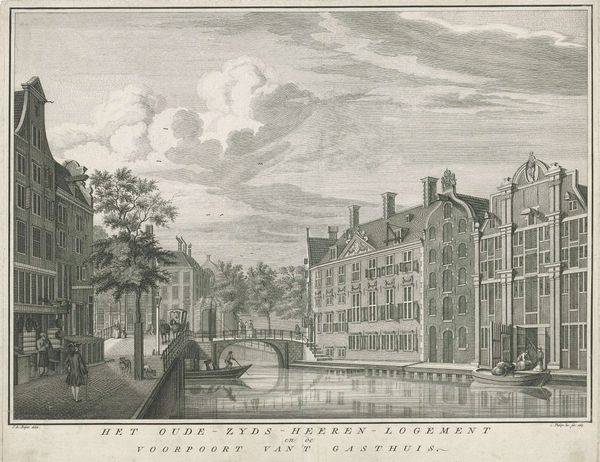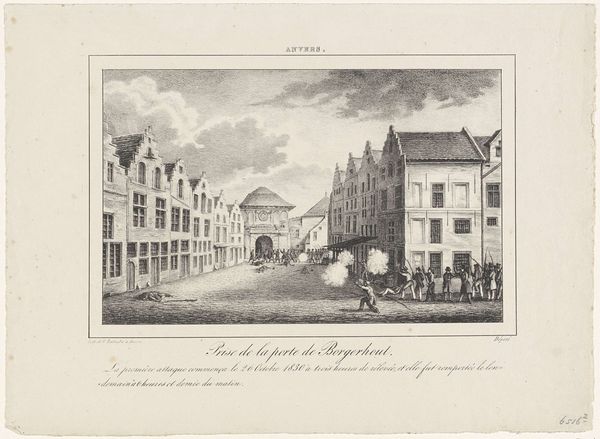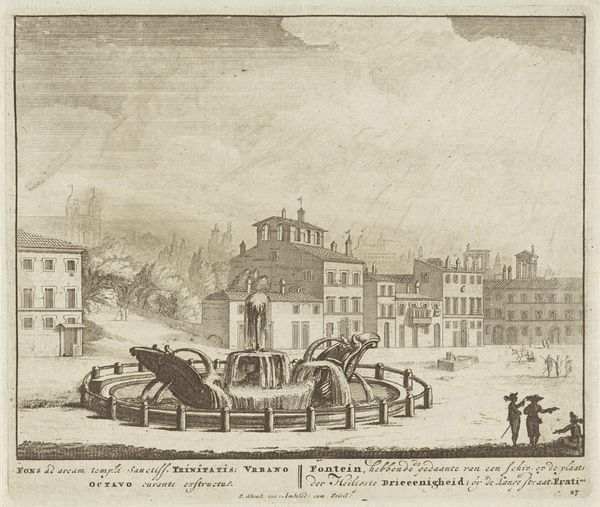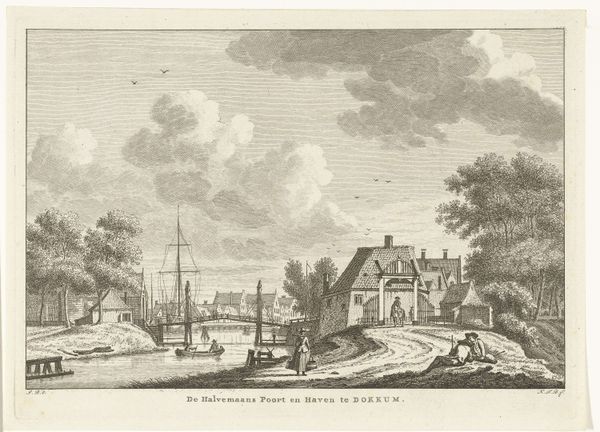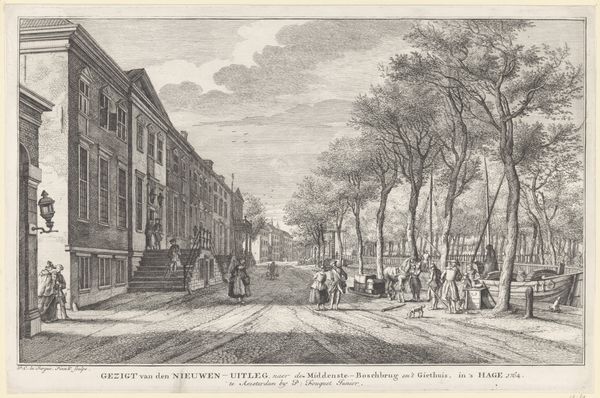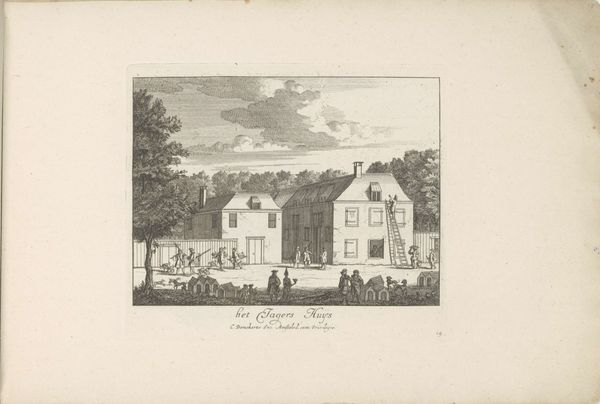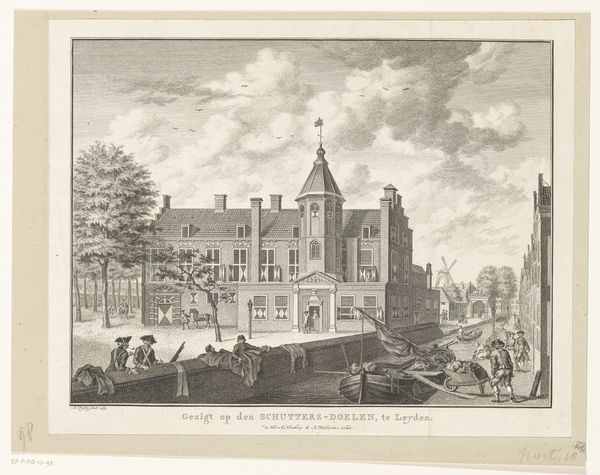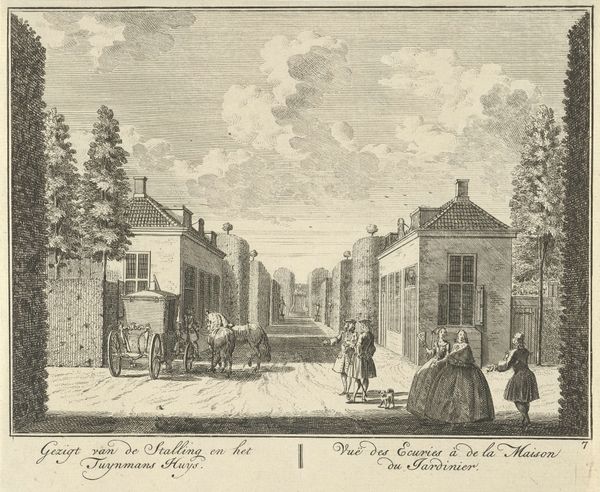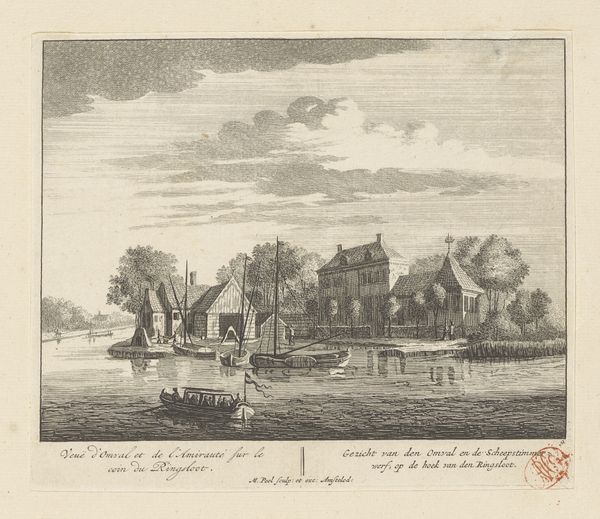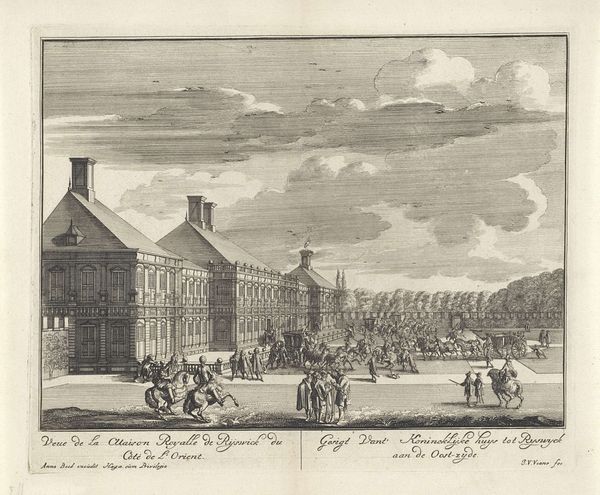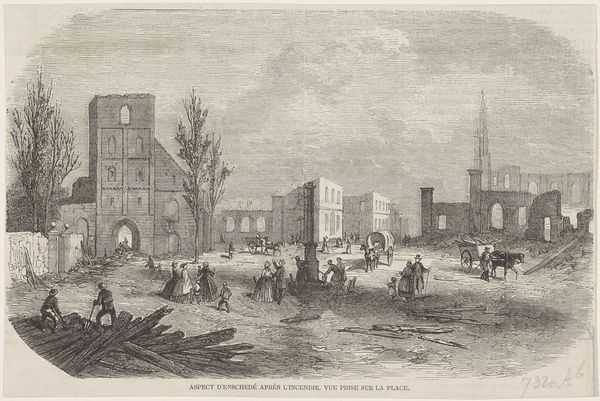
Dimensions: height 155 mm, width 100 mm
Copyright: Rijks Museum: Open Domain
Curator: Well, hello there. What are we looking at? Feels a little like stepping into a dream where everything is neatly arranged but just a touch… distant. Editor: You’ve nailed it! We’re looking at "Gezicht op kasteel Geerestein, Woudenberg" by Hendrik Spilman, created around 1774. It’s currently housed in the Rijksmuseum. An engraving. It's very much of its time – precise, detailed, but somehow... constrained. Curator: Constrained is the perfect word. Like it's holding its breath! All these careful lines, very academic. You feel like if you messed it up there'd be HUGE consequences! Is it just me, or is there something slightly melancholic in the clouds brewing overhead? They add a layer of…foreboding, perhaps? Editor: I see your point. I think that "foreboding" could be linked to Spilman's career. As the appointed city draughtsman of Haarlem, his work had a strong political leaning towards the institutions. It portrays not just a place but a societal order. And what you feel as melancholy, may just be the mood that pervades Dutch cities at this historical time. The atmospheric cloud formation could be seen as a nod to the visual conventions and political discourse around landscape art that are common during this era. Curator: So, it's less about the feeling of landscape for landscape’s sake, more the political weight of owning and controlling land, seen through its depiction... This orderly procession of horses, for instance... it all speaks to the display of wealth and established societal norms, I guess? Makes you wonder about who lived there. Were they happy? Probably not if they had to sit still and be “portrait-ed” as part of the house for too long. Editor: Precisely! Remember, during the 18th century, images like this served as both records and assertions of power. It shows how the Dutch elite chose to represent themselves and their properties – emblems of status made available for a wider public consumption via the print medium. The goal was communicating prosperity, stability, and an unbreakable lineage of control. Curator: Well, when you put it like that, it does manage to exude control. It’s powerful to look at now knowing that intention. Kind of like glimpsing into a moment somebody was trying to nail down forever. Still makes me wanna shake it up somehow... Maybe add some crazy colorful birds into that sky or… Editor: I completely understand. Perhaps that impulse shows why we are so interested in images of the past. To question them, re-imagine them, but also, understand. It offers an intimate perspective on a long lost world, but only when we come close and really try to consider what this world would look like. Curator: Precisely... the conversation! A nice conversation!
Comments
No comments
Be the first to comment and join the conversation on the ultimate creative platform.
